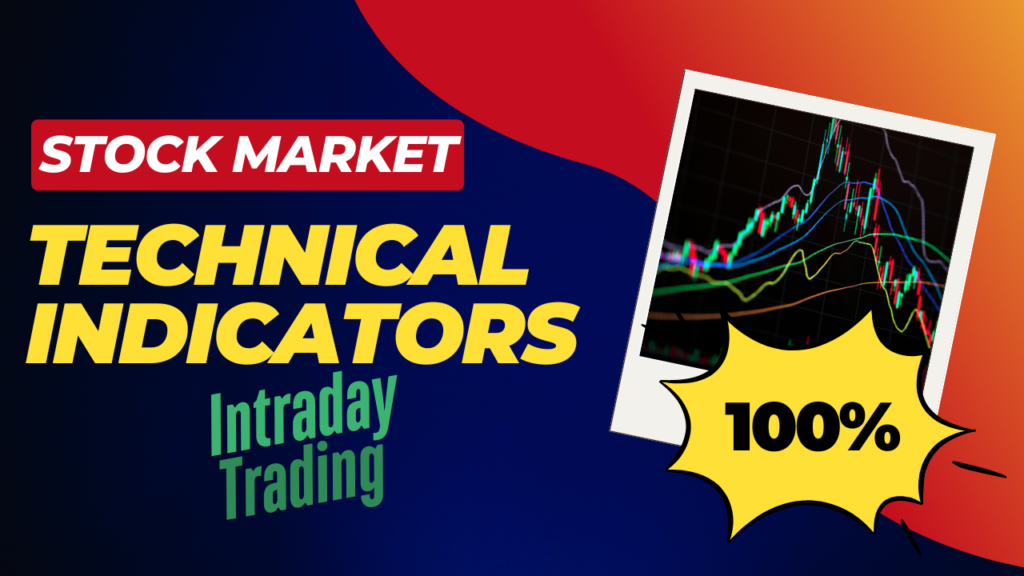Day trading is a fast-paced trading strategy that requires quick decision-making and effective tools to maximize profits. Technical indicators help traders analyze price action, identify trends, and execute profitable trades. In this article, we will explore the best technical indicators for day trading, how they work, and how to use them effectively.
1. Moving Averages (MA)
Moving Averages are essential tools for day traders to identify trends and potential entry/exit points.
- Simple Moving Average (SMA): A basic average of closing prices over a set period.
- Exponential Moving Average (EMA): Gives more weight to recent prices, making it more responsive to price changes.
- How to Use: When the price crosses above the moving average, it signals a potential uptrend. When it crosses below, it indicates a possible downtrend.
2. Relative Strength Index (RSI)
The RSI is a momentum oscillator that measures the speed and change of price movements.
- Formula: RSI = 100 – [100 / (1 + RS)], where RS is the average of up and down closes.
- Overbought/Oversold Conditions: RSI above 70 signals an overbought condition (potential reversal downward), while RSI below 30 suggests an oversold condition (potential reversal upward).
- How to Use: Look for divergences between RSI and price action for potential trend reversals.
3. Moving Average Convergence Divergence (MACD)
MACD is a trend-following momentum indicator that shows the relationship between two moving averages.
- Components:
- MACD Line (12-day EMA – 26-day EMA)
- Signal Line (9-day EMA of MACD Line)
- Histogram (difference between MACD Line and Signal Line)
- How to Use: When the MACD Line crosses above the Signal Line, it generates a bullish signal. When it crosses below, it gives a bearish signal.
4. Bollinger Bands
Bollinger Bands consist of a moving average with two standard deviation bands above and below it.
- Components:
- Middle Band: 20-period SMA
- Upper Band: SMA + 2 Standard Deviations
- Lower Band: SMA – 2 Standard Deviations
- How to Use: When the price touches the upper band, it may be overbought; when it touches the lower band, it may be oversold. A squeeze (narrowing of bands) indicates potential upcoming volatility.
5. Volume Weighted Average Price (VWAP)
VWAP is a valuable indicator for intraday trading as it reflects the true average price of a security, based on both volume and price.
- How to Use: When the price is above VWAP, it signals a bullish trend; when below, it suggests a bearish trend. Institutions use VWAP to gauge fair value.

6. Stochastic Oscillator
The Stochastic Oscillator is a momentum indicator comparing a stock’s closing price to its price range over a specific period.
- Formula: %K = [(Current Close – Lowest Low) / (Highest High – Lowest Low)] * 100
- How to Use: Readings above 80 indicate overbought conditions, while readings below 20 suggest oversold conditions. Divergences signal potential trend reversals.
7. Average True Range (ATR)
ATR measures market volatility by calculating the average range between high and low prices over a set period.
- How to Use: Higher ATR values indicate more volatility, while lower values suggest a stable market. It is useful for setting stop-loss levels.
8. Fibonacci Retracement
The Fibonacci Retracement tool helps identify potential support and resistance levels based on the Fibonacci sequence (23.6%, 38.2%, 50%, 61.8%, and 100%).
- How to Use: Traders look for price pullbacks to Fibonacci levels before entering trades in the direction of the trend.
Conclusion
Choosing the right technical indicators for day trading depends on your strategy, risk tolerance, and trading style. Combining multiple indicators can improve accuracy and reduce false signals. Popular combinations include:
- MACD + RSI for trend confirmation and momentum strength.
- VWAP + Bollinger Bands for breakout strategies.
- Fibonacci Retracement + Moving Averages for identifying strong entry points.
Mastering these indicators will help you make informed trading decisions, manage risks, and enhance profitability in day trading. 🚀
What’s your favorite technical indicator for day trading? Let us know in the comments!
